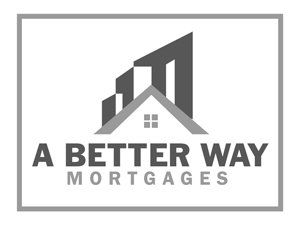New Paragraph
3 Misconceptions About Reverse Mortgages in Canada
One of the benefits of working with an independent mortgage professional is choice when it comes to mortgage product. When you work with a single bank or financial institution, you are limited to the products they offer. When you deal with a mortgage broker, you gain access to products from many lenders. Some of these products are very specialized and provide financing solutions as unique as the people they were developed for.
One such product is a reverse mortgage. In Canada, HomEquity Bank offers the CHIP reverse mortgage to homeowners 55+. It’s certainly not for everyone, but while mortgage products are becoming increasingly difficult to qualify for in Canada, it’s certainly worth considering if you meet the criteria. The following article was written by Roland Mackintosh, a business development manager at HomEquity.
If you have any questions about your financial situation, your current mortgage, or learning more about a CHIP reverse mortgage (for you or your parents), please don’t hesitate to contact me anytime!
Top 3 misconceptions about Reverse Mortgages:
I recently read an article by Jamie Hopkins in Forbes magazine, entitled “ Americans Don’t Even Know What Their Most Important Retirement Asset Is.” The article highlighted three common misconceptions about reverse mortgages and unsurprisingly, they are prevalent in Canada as well as in the U.S.
The top 3 misconceptions about Reverse Mortgages are as follows:
1. The bank owns your home.
2. Your estate can owe more than your home
3. The best time to take a Reverse Mortgage is at the end of your retirement
Let’s examine each misconception in more detail.
The bank owns your home.
Over 50% of Canadian homeowners over the age of 65, believe the bank owns your home once you’ve taken a reverse mortgage. Not true! We simply register our position on the title of the home, exactly the same as any other mortgage instrument, with the main difference in the flexibility of not having to make P&I payments on the reverse mortgage.
Your estate can owe more than your home.
A reverse mortgage, unlike most traditional mortgages in Canada, is a non-recourse debt. Non-recourse means if a borrower defaults on the loan, the issuer can seize the home asset, but cannot seek any further compensation from the borrower – even if the collateral asset does not fully cover the full value of the loan. Therefore, when the last homeowner dies (and the reverse mortgage is due), the estate will never be responsible for paying back more than the fair market value of the home. The estate is fully protected – this is not the case for almost any other mortgage loan in Canada, which is full recourse debt. So read the fine print the next time you offer to co-sign for a loan for mom!
The best time to take a Reverse Mortgage is at the end of your retirement.
This is a common mistake that reflects an “old-school” financial planning mentality. For the majority of Canadians (without a nice government pension), the old school financial planning mentality is about cash-flow, and is as follows:
a) Begin drawing down non-taxable assets to supplement your retirement income.
b) Once your non-taxable assets are depleted, begin drawing down more of your registered assets (RSP/RIF) to supplement retirement income.
c) Once your registered assets are depleted, sell your home, downsize and re-invest to generate enough cash-flow to last you until you die.
The problem with the “old-school” financial planning model is two-fold:
1. 91% of Canadian seniors have no plans to sell their home ( CBC News “Canadian Boomers Want To Stay In Their Homes As They Age ).
2. You are missing out on a huge tax-saving opportunity by not taking out a reverse mortgage in the beginning of your retirement.
“Research has consistently shown that strategic uses of reverse mortgages can be used to improve a retiree’s financial situation, and that reverse mortgages generally provide more strategic benefits when used early in retirement as opposed to being used as a last resort.” – Jamie Hopkins, Forbes
In Canada, a reverse mortgage can be set-up to provide homeowners with a monthly draw out of the approved amount. For example: client is approved for $240,000 and decides to take $1,000/month. This is deposited into the clients’ bank account over the next 20-years. Interest accumulates only on the amount drawn (ie: not on the full dollar amount at the onset).
This strategy allows clients to draw down less income from their registered assets to support their retirement lifestyle. In turn, this can create some excellent tax savings, since home equity is non-taxable. Imagine lowering your nominal tax bracket by 5 – 10% each and every year over a 20 year period? The tax savings can be huge. You are also able to preserve your investable assets, which historically, can generate a higher rate of return when invested over a greater period of time.
Share
RECENT POSTS


STAY INFORMED
Subscribe to my newsletter




